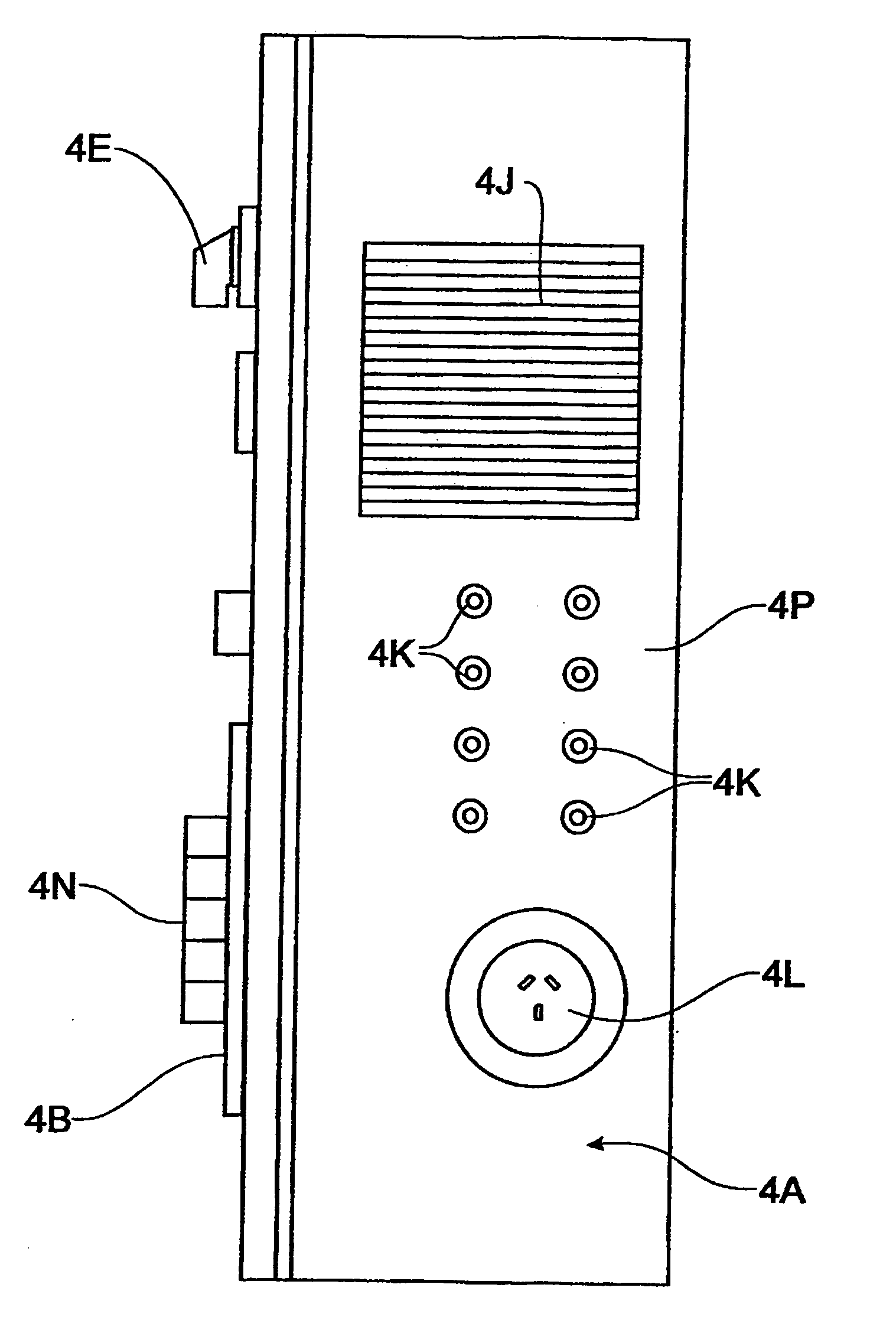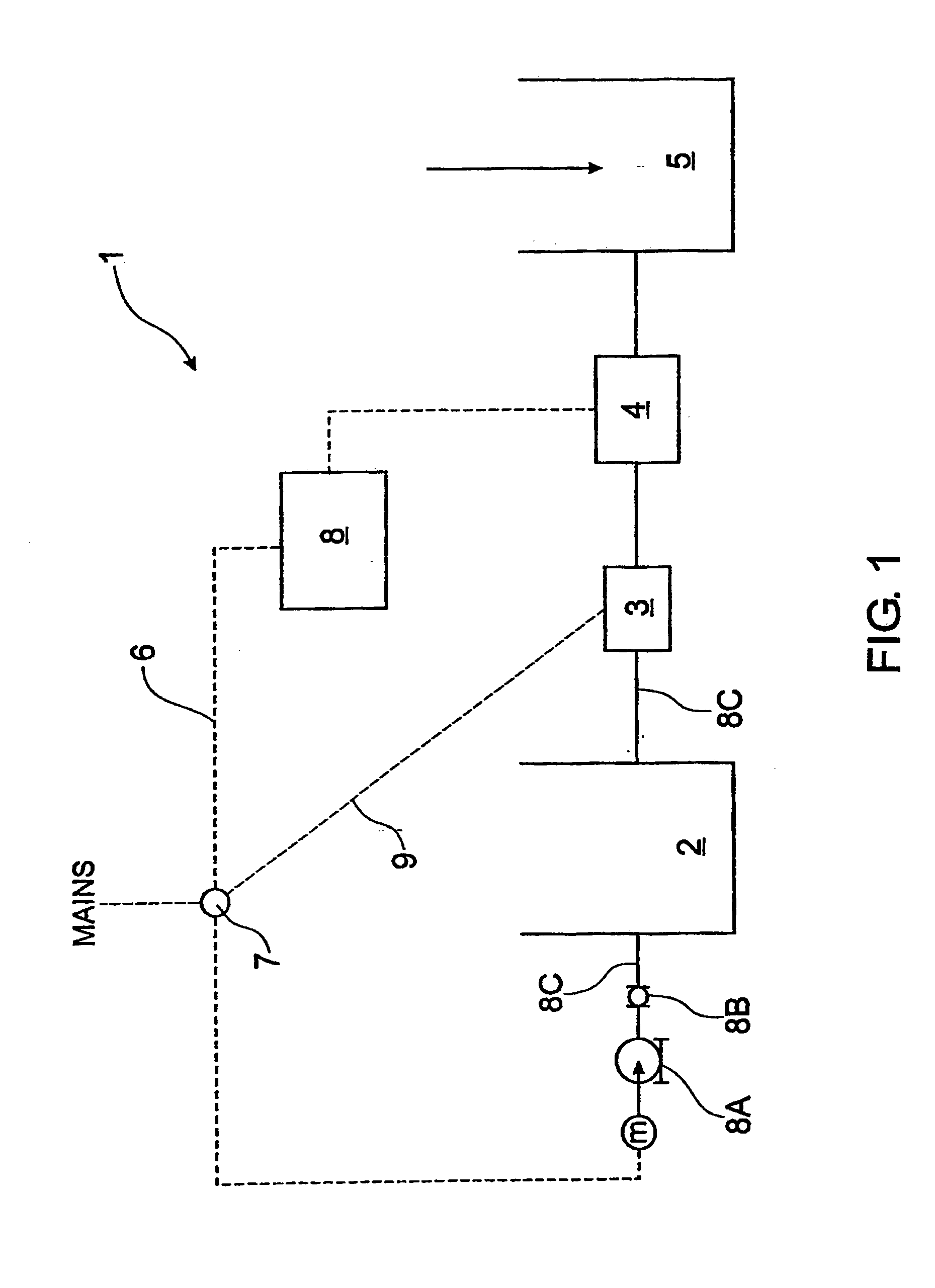Contaminant removal apparatus and installation method
a technology of contaminant removal and installation method, which is applied in the direction of centrifugal separation, water/sewage treatment, water treatment parameter control, etc. it can solve the problems of increasing the restrictions and stringentness of older methods of contamination removal or water purification, insufficient efficiency of meeting stricter water purity standards, and other methods of wastewater treatment are expensive. , to achieve the effect of rapid and unnecessary depletion of electrodes, high efficiency and cost-effectiv
- Summary
- Abstract
- Description
- Claims
- Application Information
AI Technical Summary
Benefits of technology
Problems solved by technology
Method used
Image
Examples
example 1
[0089] The following examples apply to all radioactive species including uranyl oxide such as U3O8.
(a) Electrocoagulation Parameters for a Fixed Flow Rate of 100 litres / minute and Cell Residence Time of 6.99 seconds
[0090] The electrocoagulation cell comprises 25 electrodes with a gap of 3 mm between each electrode. The total wetted electrode surface area is 8.16 m2. Electrical connections to a DC power supply are made to 9 electrodes. If the solution conductivity is 330±15% μS / cm, the cell requires 75±15 volts and 314±15% amps.
(b) Electrocoagulation Parameters for a Fixed Flow Rate of 100 litres / minute and Cell Residence Time of 6.99 seconds
[0091] The electrocoagulation cell comprises 25 electrodes with a gap of 3 mm between each electrode. The total wetted electrode surface area is 8.16 m2. Electrical connections to a DC power supply are made to 9 electrodes. If the conductivity is 630 μS / cm, the cell requires 55±15% volts and 404±15% amps.
(c) Electrocoagulation Parameters ...
example 2
[0094] The following example applies to installation of an electrocoagulation system for the removal of free and complex cyanide species from wastewater from an industrial process such as aluminium smelters. The wastewater can contain free cyanide ions, such as sodium cyanide, and complexed cyanides such as sodium ferdcyanide and ferrocyanide. Water purity regulations, which specify acceptable levels for a wide range of contaminants in water discharged into waterways, sewer systems or discharged in other manners, dictate that the total cyanide content of discharged water is less than 0.1 mg / L. The EC system used in this example is similar to that shown in FIGS. 4-7.
[0095] If the pH of the wastewater is greater than 8.2, an acid solution such as that described above in relation to the FIGS. 4-7 embodiment is added to the wastewater.
[0096] If the pH of the wastewater is less than 7.0, an alkali solution such as that described above in relation to the FIG. 5 embodiment is added to th...
example 3
[0107] Table 1 shows the desired range of voltage and current to be applied to an EC cell and the optimum electrode type for effective removal of a list of contaminants.
[0108] Table 1 also shows that the installation method of the invention may also be used in relation to treatment of wastewater containing high BOD (Biological Oxygen Demand) and high COD (Chemical Oxygen Demand) to reduce values to those suitable for discharge.
[0109] All experimental data was carried out using the bench-type EC system of FIG. 1 and steps (i) to (iii) of the installation method. Experimentation was required to achieve the optimum experimental parameters.
[0110] An 8 electrode system was used and the number of electrodes connected to the power supply (i.e. unipolar electrodes) depended on the conductivity of the wastewater sample. The number of unipolar connections was calculated as a function of varying wastewater conductivities. 2 unipolar electrodes were used for wastewater with high conductivity...
PUM
| Property | Measurement | Unit |
|---|---|---|
| conductivity | aaaaa | aaaaa |
| conductivity | aaaaa | aaaaa |
| conductivity | aaaaa | aaaaa |
Abstract
Description
Claims
Application Information
 Login to View More
Login to View More - R&D
- Intellectual Property
- Life Sciences
- Materials
- Tech Scout
- Unparalleled Data Quality
- Higher Quality Content
- 60% Fewer Hallucinations
Browse by: Latest US Patents, China's latest patents, Technical Efficacy Thesaurus, Application Domain, Technology Topic, Popular Technical Reports.
© 2025 PatSnap. All rights reserved.Legal|Privacy policy|Modern Slavery Act Transparency Statement|Sitemap|About US| Contact US: help@patsnap.com



